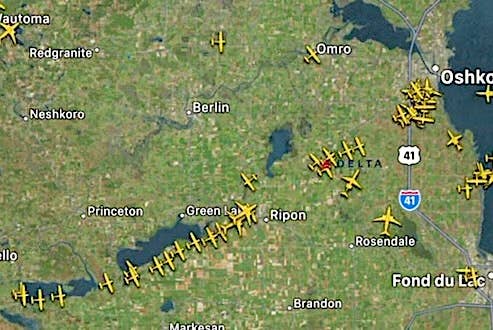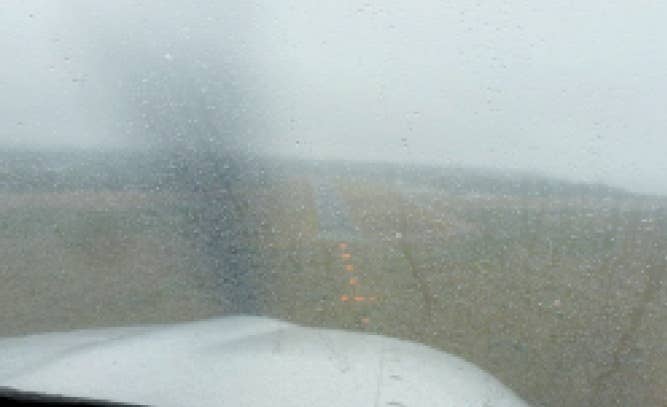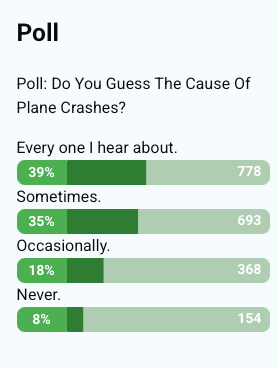Maintenance, Paperwork And Checkrides
When you present yourself to a designated pilot examiner (DPE) or an FAA employee for a checkride to add a new certificate or rating, both you and the aircraft are…

Originals of both the registration (left) and airworthiness certificates must be aboard the aircraft and in a visible location. A temporary registration also may be allowed.
When you present yourself to a designated pilot examiner (DPE) or an FAA employee for a checkride to add a new certificate or rating, both you and the aircraft are subject to closer inspection than you may be accustomed. Pilots aren’t expected to know the dry torque specification for an engine’s cylinder studs, but they definitely are expected to know how to check its oil level and know how to add more, if needed, of the correct type. What about a slack tire? Does the applicant know how to check it? Can the applicant legally add air to it, or even clean the windshield?
While it’s important to know basic things like fuel and oil specifications, it’s often more important to know where that information is, and use it to answer the examiner’s questions. Yet the FAA and individual DPEs report applicants experience checkride failures attributed to insufficient knowledge of preflight inspection and preparation, plus registration and airworthiness requirements. What are some of the basic things about maintenance and paperwork you should know for the ride?
Part Of The Oral
As stated in the introduction to the FAA Airman Certification Standards: “The ground portion of the practical test allows the evaluator to determine whether the applicant is sufficiently prepared to advance to the flight portion of the practical test. The oral questioning will continue throughout the entire practical test. The FAA encourages applicants and instructors to use the ACS when preparing for knowledge tests and practical tests.”
The idea is “that the applicant exhibits satisfactory knowledge, risk management, and skills associated with airworthiness requirements, including airplane certificates.” A lot of this is covered in the old ARROW acronym, which stands for Airworthiness certificate, Registration certificate, Radio station license (no longer required except possibly for international flights), Operating limitations and Weight and balance data. But do you know where to find these items and demonstrate they’re in order?
The certificate of airworthiness must be displayed at the cabin or cockpit entrance so it is legible to passengers or crew and must be the original document, not a copy. The registration must also be current and prominently displayed. The FAA states that aircraft with an expired registration “would be without authority to operate,” and if you don’t know that walking in for your checkride, you’re not as ready as you could be. The airworthiness certificate and registration must be original documents, not copies.
A temporary registration valid for 90 days may be carried, but how would you determine that the registration is, in fact, current? The FAA’s records can be checked online: registry.faa.gov/aircraftinquiry.
The remaining items covered by ARROW usually can be found in the aircraft’s POH/AFM. Part of that likely will be an equipment list, which is used to develop the weight and balance data. Placards are another part of the operating limitations. Their content and placement usually are listed in the POH/AFM.
Maintenance Status
At some point before the checkride, you should at least know where the maintenance logs are and how to access them. Most piston aircraft operated under Part 91 are required by FAR 91.409 to have had an annual inspection resulting in a logbook endorsement stating it was inspected and found to be in an airworthy condition within the preceding 12 months.
Aircraft also can be enrolled in a progressive inspection program that replaces the annual requirement. Associated progressive inspection documentation must provide a “current inspection procedures manual” and, among other information, “an inspection schedule, specifying the intervals in hours or days when routine and detailed inspections will be performed.” Regardless of how the aircraft’s operator meets the inspection requirements, the applicant needs to know how to access that documentation for the checkride.
Maintenance records also must include a record of any applicable Airworthiness Directive (AD) assigned to the airframe, powerplant, propeller or accessory. That record will state whether the AD applies and its compliance status, including a specific date or time if a subsequent inspection or action is applicable. Various manufacturer service bulletins or supplemental information also may apply to the aircraft, and there may be an applicable FAA Special Airworthiness Information Bulletin. These additional materials are just that: additional. They usually aren’t required for Part 91 aircraft.
Equipment Requirements
The FARs specify the minimum equipment required for the flight, depending on conditions: day, night, VFR and/or IFR. In addition to verifying what’s present is working and appropriate for the flight, the applicant needs to know whether and how to proceed if some of that equipment is inoperative.
For example, a dark night VFR flight may not be required to have working gyroscopic instruments, but is that wise? What are the ramifications, and what can the applicant do to mitigate the additional risk? Perhaps more important, why are those instruments not working? If the problem is a failed vacuum pump, its failure may stem from a mechanical problem with the engine and deserves to be checked before flight.
Often overlooked when considering equipment lists are items like fire extinguishers, headsets or even a tow bar. These likely are optional equipment but nevertheless the aircraft’s weight and balance documentation may consider them. If so, are they present and where they should be? If items on the equipment list are missing, the proper response is to either locate those items or adjust the empty weight and center of gravity location before computing the weight and balance prior to flight.
Scenario-Based Decisions
Part of the checkride likely will involve a scenario presented by the examiner. For instance, it could involve a cross-country flight that will depart in day VFR but return as a VFR night flight. On your daytime preflight, you discover a navigation light is inoperative and a tire is worn. Is the aircraft airworthy? The navigation light is not required for day VFR flight, but it is at night. What are your options? What about a daytime flight with an inoperative strobe or rotating beacon light? Anti-collision lights may be a required item on some aircraft.
You could arrange for the inoperative light to be repaired by a mechanic before your daytime departure. As a private pilot, you could replace the light bulb as preventive maintenance and make the appropriate logbook entry describing the work performed, date, type of certificate, and certificate number and signature. You could make a maintenance log entry deferring the light, placard the switch as inoperative, disable the circuit and defer the light for the daytime flight. You also could call ahead to a maintenance facility at your intended destination to have the light repaired prior to your nighttime return flight, when the light is required.
As for the tire, you could refer to a maintenance manual to determine its airworthiness, or you could contact a certificated mechanic to make a determination. If airworthy, you could proceed and operate your flight as planned. However, after landing at your destination, you may be faced with a tire that is now unairworthy (worn beyond limits). What is the risk of making this departure with a marginal tire?
Another scenario: During your VFR daytime cross-country flight, you experience a vacuum system failure, rendering your artificial horizon and directional gyro inoperative. What would your course of action be during this flight and what are your options? Give this some thought as to what the best plan would be. While this situation may not be considered a mechanical deficiency impacting the airworthiness of the aircraft and requiring a diversion to the nearest suitable airport (FAR 91.7), you may consider it prudent to divert based on the current weather en route and at your destination. If the weather is a hazy three-miles of visibility with ceilings just above VFR minimums, what additional risks are imposed by continuing your flight? While it may be legal to continue as planned, is it safe and smart?
Change the scenario to an instrument checkride: Can Instrument X or Radio Y be inoperative and the proposed IFR flight still be legal and safe? What about the databases for installed equipment; do they need to be current? The answer can get a little murky, and it depends in part on the manufacturer’s documentation and in part on the FARs under which the flight is operated. (Hint: An expired database usually is perfectly legal for VFR.)
What the evaluator most likely will want to see is that you, as the applicant, realize that there is a significant element of risk involved here, especially for a newly licensed private pilot inadvertently entering instrument flight conditions with limited instrumentation. Another consideration is that when you arrive at your destination, you may not be legal to depart based upon the aircraft you are flying and what the aircraft’s equipment list may dictate for VFR night flight. Yes, the FAA does not require gyroscopic instruments for day or night VFR flight, but the aircraft’s limitations may require these instruments or the vacuum system to be operational.
Different Solutions
These are real-life situations that a certificated pilot might encounter on a routine flight. The evaluator will want the applicant to recognize the additional risk, if any, these circumstances pose and take appropriate action relative to the situation and your experience level. The solution to these problems won’t always be the same for everyone. While the scenario’s flight may be completed as planned, consider the risk to which you’re exposing yourself and your passengers.
I will always remember my chief pilot’s statement that as pilot in command, one should “be prepared to answer the mail” with a logical explanation as to why you did what you did should you have an emergency or deviate from normal procedures. As a certificated pilot, it’s your responsibility to understand these circumstances and their implications for the planned flight, and to take whatever actions are appropriate to mitigate the additional risks they impose. The examiner wants to know if you recognize these responsibilities and can act upon them.
This article originally appeared in the December 2018 issue of Aviation Safety magazine.
For more great content like this, subscribe to Aviation Safety!






